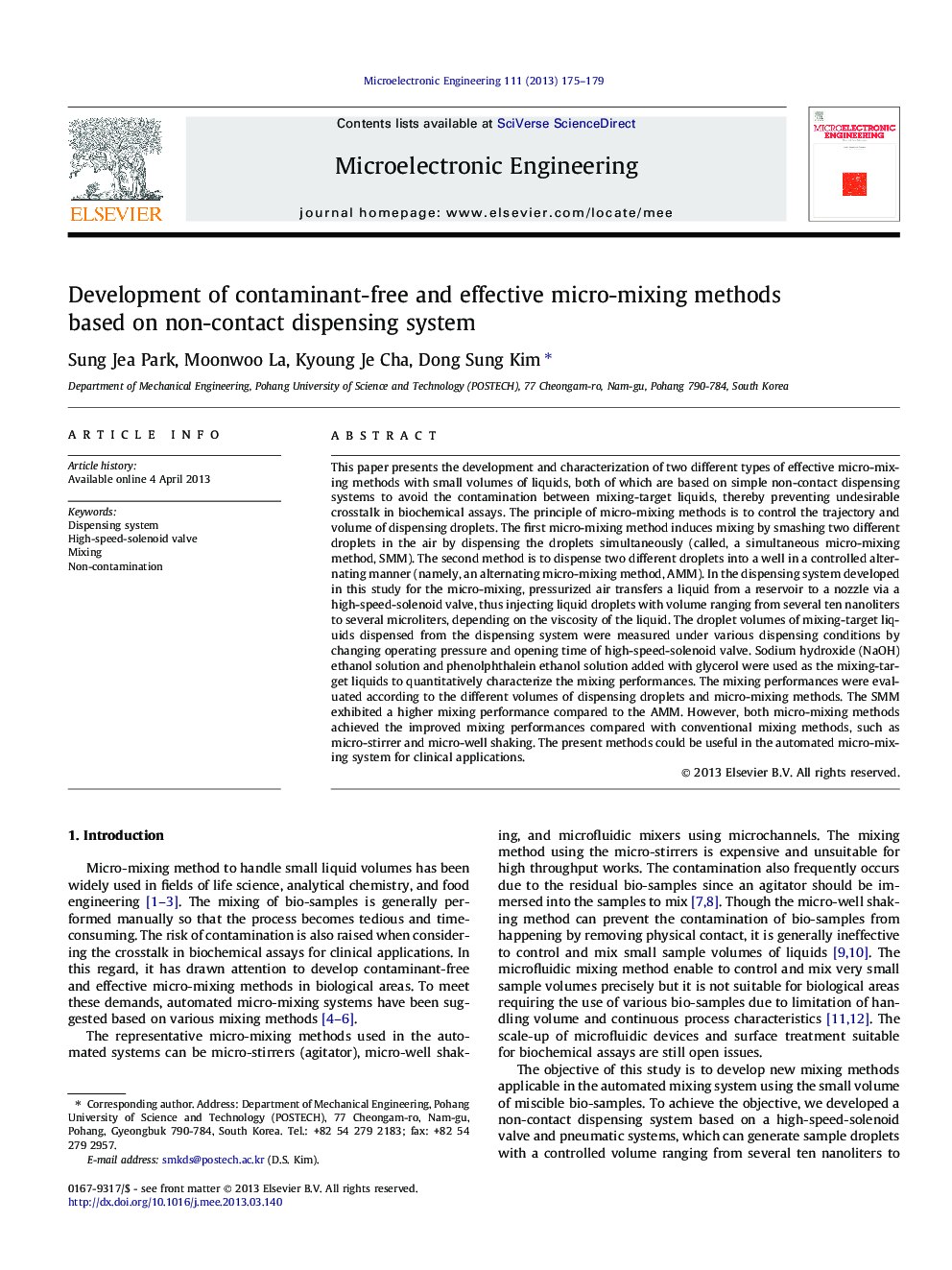| Article ID | Journal | Published Year | Pages | File Type |
|---|---|---|---|---|
| 539976 | Microelectronic Engineering | 2013 | 5 Pages |
•We develop a non-contact dispensing system using a high-speed-solenoid valve.•Micro-mixing methods are proposed based on the dispensing system.•The principle is to generate droplets of small volume for high diffusive surface area.•Mixing performances are evaluated according to the different dispensing conditions.•Mixing performances are enhanced by kinetic energy and collision of droplets.
This paper presents the development and characterization of two different types of effective micro-mixing methods with small volumes of liquids, both of which are based on simple non-contact dispensing systems to avoid the contamination between mixing-target liquids, thereby preventing undesirable crosstalk in biochemical assays. The principle of micro-mixing methods is to control the trajectory and volume of dispensing droplets. The first micro-mixing method induces mixing by smashing two different droplets in the air by dispensing the droplets simultaneously (called, a simultaneous micro-mixing method, SMM). The second method is to dispense two different droplets into a well in a controlled alternating manner (namely, an alternating micro-mixing method, AMM). In the dispensing system developed in this study for the micro-mixing, pressurized air transfers a liquid from a reservoir to a nozzle via a high-speed-solenoid valve, thus injecting liquid droplets with volume ranging from several ten nanoliters to several microliters, depending on the viscosity of the liquid. The droplet volumes of mixing-target liquids dispensed from the dispensing system were measured under various dispensing conditions by changing operating pressure and opening time of high-speed-solenoid valve. Sodium hydroxide (NaOH) ethanol solution and phenolphthalein ethanol solution added with glycerol were used as the mixing-target liquids to quantitatively characterize the mixing performances. The mixing performances were evaluated according to the different volumes of dispensing droplets and micro-mixing methods. The SMM exhibited a higher mixing performance compared to the AMM. However, both micro-mixing methods achieved the improved mixing performances compared with conventional mixing methods, such as micro-stirrer and micro-well shaking. The present methods could be useful in the automated micro-mixing system for clinical applications.
Graphical abstractFigure optionsDownload full-size imageDownload as PowerPoint slide
